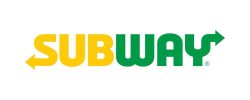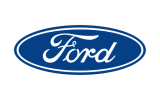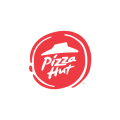Prices of Instagram, Snapchat & TikTok filters
How much does Filters for Social Media cost?
The price of filters on social networks (Instagram, Snapchat, Facebook or TikTok) depend on various factors and the people you will be dealing with. Prices can vary from 400€ à 20 000€.
In general, it should be understood that the cost of producing filters and effects on social networks corresponds to man time. Of course, some digital marketing agencies will charge according to the impact of the campaigns for the brand, this can also make the price of campaigns fluctuate.
On this page you will find all the elements that can change the prices of augmented reality filters.
Contact
1. Creation of assets
To create a filter on social networks, you need to call on graphic designers and digital strategy agencies to design the visual elements that will then be integrated into augmented reality using Spark AR software (for Instagram and Facebook) or Lens Studio (for Snapchat). Depending on the campaign, the assets may be supplied by the brands or created from scratch. If the visual identity has to be created, AR filter designers will take an interest in the brand image projected by the client and design an initial attempt at an augmented reality filter. There are two possible types of graphic elements for Instagram or Snapchat filters. 2D assets and 3D assets.
The 3D elements allow for a more qualitative rendering in the augmented reality effect, but it must be taken into account that the size of the filters is limited by the social networks. On Instagram and Facebook, filters are limited to 4MB and on Snapchat to 8MB.
Prices for creating assets can vary from €100 to €10,000.
2D Assets
In case the brands do not provide the assets, the 2D assets have to be created. There are different types of 2D graphic elements.
There may be gatheringThis can be based on the brand's graphic charter, the objective of the campaign, etc. And there can also beillustration (from scratch). As with all creative work, the illustration that will be created for the filter may have different rates depending on who is going to draw the elements (its experience, its seniority, its creations, etc.) and also of thepotential extension of rights to illustrations concerned. For example, if the brand wants to use the artwork outside the Instagram filter, the price may be higher. In the creation of 2D assets graphic thinking should also be taken into account (this is detailed in part 4: other factors) and this will cause the price to fluctuate.
3D assets
In order to have qualitative renderings on social networks, it is generally important to create filters with 3D elements. These are then integrated into the environment of the effect user or on him (his face, feet, body, hand). The creation of 3D assets has two main steps and optional steps. The first step is to create the structure of the 3D modelIn order to integrate them into filters on social networks, you need to create them in low poly (few polygons), which allows for a smaller size and the ability to integrate it into Spark AR or Lens Studio. Afterwards, the texturing is important. This corresponds to the element that will be integrated on the structure to give the final rendering. Generally, the textures are also compressed so that they can be integrated into the filters.
There are also other elements that can vary the price of 3D elements. For example, it is possible tointegrate physics into 3D models to improve the realism of the user's movements. Or even Blend Shapes which allow the 3D model to react according to the movements of the eyes, mouth, etc. This is often used to integrate the face of a 3D character on the user's head and make it react to movements. These two types of integration will have an impact on prices.
2. Integration & optimization augmented reality
Once the graphic elements are created (assets2D & 3D), they must then be integrated into the augmented reality software in order to create the filters on the social networks. The characteristics of the assets will define how to integrate the elements and adapt them so that the scene is aesthetically pleasing and consistent with the mechanics.
The number of elements where properties will have to be defined and the necessary adjustments will make prices fluctuate.
Filter prices can vary from €200 to €7000.
Choice of scene
The choice of scene will be the first determining factor in the creation of its filter. This is the stage where we determine whether the scene will be on the front camera or rear camera the smartphone (or both). In addition, it must be determined which elements will be tracked in order to integrate the assets previously made. On all platforms, the algorithm is able to recognise the user's face, certain parts of the body and face and segment between what a person is and what is not (the background).
Some platforms have specificities on their recognition algorithm. For example, on Snapchat it is possible to track the user's hands or feet. Since 2021, it is also possible to recognise buildings (World object). Either the monuments are already recognised by the algorithm (Eiffel Tower and Arc de Triomphe in France) or it is possible to train the algorithm on Lens Studio to recognise the desired buildings.
Properties
By integrating the 2D or 3D graphic elements, it is then necessary to assigning characteristics that allow them to meet the aesthetic desired. All developers know the problem of having different renderings between design or modelling software and augmented reality software.
The definition of these characteristics will be able to influence the colours and textures within the materials. Define the normal map (depths of 3D elements), opacity, retouching and reflections.
The light management is also done at this stage, it is a determining point for displaying elements in 3D. The definition of all these properties will make the price of the filter fluctuate on social networks.
Optimization
Once the elements have been integrated, the scenes selected and the properties defined, you will have to optimise all elements. For example, the textures will be compressed again by the augmented reality software. The sounds must be in a specific format (m4A, 44100 Hertz).
For filters on social networks, it is also necessary to adapt filters to all possible OS. Phones with different sizes and features.
Optimisation remains a complex and time-consuming phase for the creators of augmented reality filters. Depending on this, the price is likely to increase.
3. Creation of interactions
In order to make a filter more dynamic, which will be displayed on social media, it is necessary to create interactions when the user tries the effect. There are a multitude of interactions and here are a few examples: blink, open your mouth, touch the screen, move your head, smile etc... All of these can trigger a specific action in the filter such as making an object appear or triggering the next step in the filter.
Interaction will make an augmented reality filter more interesting for users on communication platforms. Thanks to its original visuals and the fact that it involves the interlocutor, this stage is particularly important and will have an impact on the filter's reputation on social networks.
As a true digital communications strategy, brands will be able to stand out from their competitors and increase their visibility. It is also possible to create call-to-actions (in particular to your website) to improve your image and your e-reputation, without sacrificing the user experience. Implementing a marketing strategy of this kind with a digital agency will enable you to win the loyalty of prospective customers with a new type of medium and activate different levers.
The price of a filter can therefore fluctuate according to the complexity of the interaction, but also the number of possible interactions.
4. Other factors
Other factors can vary the price of your Instagram, Facebook, Snapchat or TikTok filters. These may relate to the state of progress of your project, your project itself, but also the people you will be working with to produce your AR effect as part of your content marketing campaign.
Deadlines
Anecdotally, many requests to make filters on social networks have fairly short deadlines (1 to 2 weeks).
It is important to know that a digital agency sets a timetable for creatives and developers in order to optimise project management. Some of these requests may need to be modify the planned agenda in project management and naturally increase the price of your augmented reality filter.
Project management
For each augmented reality project, a retroplanning is established allowingorganise the return trips between agencies and clients. Some digital agencies (not us) will limit the number of round trips, and therefore charge for optimisations.
This is whyit is important to define the specifications well in advance with his client, 2D mockups detailing the entire storyboard. This makes it possible not to increase the rates during the service.
Creative thinking
Creative thinking is a process that takes place when The client has a communication objective, but no concrete method for achieving it. The role of the agencies will be to think, create mockups and think about the communication plan in parallel which will highlighting the filter on social networks. Some agencies charge for mockups, on our side we create your mockups for free at Filter Maker.
Contact persons
To make a filter for social networks, you can use different interlocutors :
- Do it yourself The least expensive, but requires a lot of time to learn how to create complex filters.
- The self-employed They are few in number, their rates are between 200 and 1000€ per day.
- Augmented reality agencies The rates are higher than those of freelancers, but the agencies will accompany you from the idea to the production, to the communication plan, to the weekly reports, etc.
FAQ
Why do the prices of filters on social networks vary so much?
As explained above, there are many factors that vary the cost of creating a filter on social networks. Indeed, it can depend on the assets provided or not by the company, the complexity of the filter mechanism or the elements to be integrated (2D or 3D) as well as the social network on which the effect must be published.
In addition, short deadlines require a different organisation for our teams and this can make the price of an Instagram, Snapchat or TikTok filter vary.
Is there a price difference between an Instagram Filter, a Snapchat Filter or a TikTok Filter?
Indeed, the software for creating filters is different depending on the social network. Some require more time than others to create a filter and therefore our teams have to spend more time on it. In addition, the mechanism of a filter may also require different coding depending on whether the effect is to be published on Instagram, Snapchat or TikTok.
Is it possible to have a filter on social networks for less than $500?
Going through an agency like Filter Maker it will be difficult to get a filter for less than $500. Agencies charge for man time and Instagram, Snapchat or TikTok filters often take a long time to create and require specific expertise. We have also created a platform (Lookaar) to create a filter automatically. Prices start at $19.
How much does a roulette filter cost?
The price of a filter wheel will depend on the animations to be integrated. Generally speaking, the price is between $1000 for a simple roulette filter and can rise to 5000$ if we need to integrate animations. This type of filter can be used to create a content strategy and develop a marketing strategy to improve positioning and natural referencing on social networks. This category of augmented reality effects will give you the best return on investment and increase user loyalty.
Is it possible to turn my TikTok filter into an Instagram filter for free?
Unfortunately not, each social network uses different augmented reality software. On Instagram the software to create filters is Spark AR, on Snapchat the lens software is Lens Studio and on TikTok the filter software is Effect House. So the filters cannot be duplicated between each social network. So the team in charge of your filter will have to develop the effect twice in the different software.



